Section 1. Reading the Web
Ping Kong
Made by MOUSE including photos, Chad Sansing and remixed for Clubs by Mozilla.
For many, "the Internet" is an abstract and overwhelming concept. This activity challenges learners to think concretely about how the internet communicates with a computer.
1 - 2 hours
-
Preparation
Complete the pre-activity questionnaire.Do the activity on your own first.
Familiarize yourself with the following terms:
- Command line/Command Prompt
- Hop
- Internet Protocol (IP) Address
- Internet Service Provider (ISP)
- Web Server
- Local Area Network (LAN)
- Packet
- Ping
- Router
- Traceroute
Optional: Print copies of the Utility Tip Sheet if you would like to hand it out.
Print and cut out the Ping Kong obstacle course signs.
Clear enough space in your room for an “obstacle course.” Hang up the cards labelled “My computer” and “The Website” on opposite sides of the room.

-
10
minIntroduction
Ask learners “How do you get to the Internet?”
Take a few ideas from the group, then explain the following:

Illustration by Skillcrush The "Internet" is a system of networks and the "Web" sits on top of the Internet and provides an interface for viewing and interacting with the information stored in various computers around the world. This short article from Skillcrush further explains the difference between the Internet and the Web.Further explain that:
Anytime you ask the Internet to do something, whether by entering a URL into a browser or watching a video on youtube, your internet request "hops" through several network devices, like routers and switches and servers, on its way from your computer to the website’s server.Watch the introductory video to give learners a little more context before starting the obstacle course:
There and Back Again: A Packets Tale – How does the Internet work?
-
15
minPerform the Net
Form small improv groups of 4-5 actors. Get together and brainstorm a way to perform how the Internet works. Think about how to use your space - you can perform anywhere there's room in the space around you and spread out and move around as much as you'd like. Think about the materials around you and grab any props that might help you show the Net at work.
Perform your skits for one another. Applaud your heart out for the other groups. Laugh and cheer at especially great moments of Performing the Net history!
-
5
minSet up the Obstacle Course
Say that to help understand this path, we're going to act out a human ping/traceroute in an obstacle course.
We'll travel from a i) local computer through ii) a LAN to the iii) Internet to get to iv) Google.com or the website of your choice.
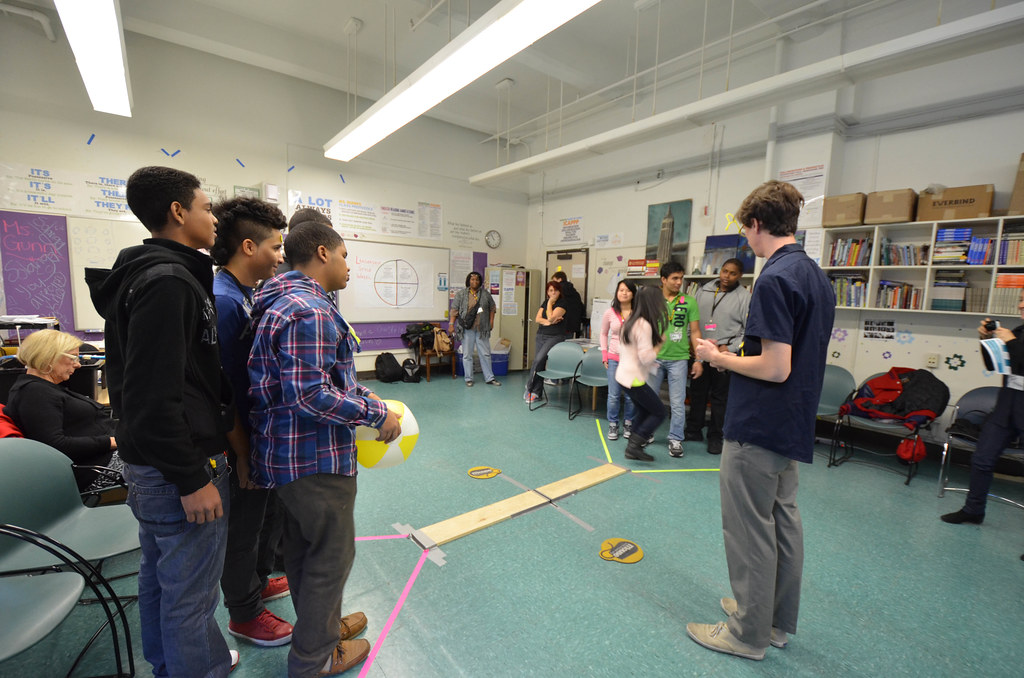
Ask the group to gather underneath the "My computer" sign and ask for three volunteers.
Hand three of the volunteers the signs labelled "Hop 1: Local Router," "Hop 2: Internet Service Provider and "Hop 3: The Website Company's Router" and ask them to spread out throughout the room.
Explain that the signs represent different "hops" that an Internet request must go through before it gets to the website a user is looking for. The rest of the students are packets of computer code trying to get to the website at the other end of the room.
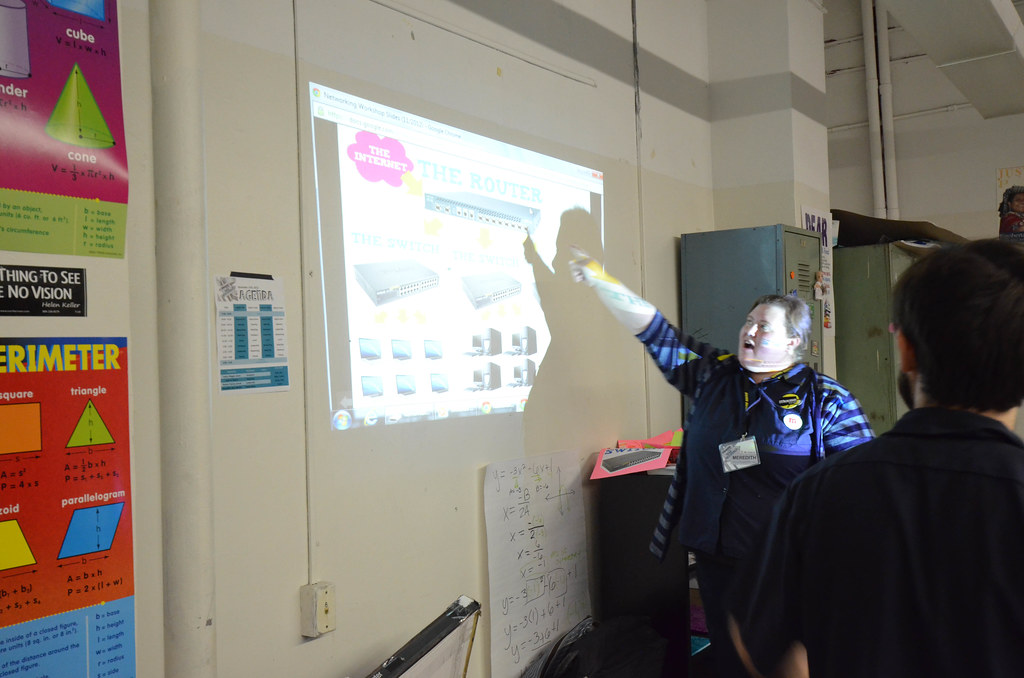
-
10
minModel the Obstacle Course
Choose one of these “packet” students to act as a model for the rest of the group before they all start the activity.
Give the learners the following scenario
I’m at my computer and I decide to watch a video on YouTube. After I type in the web address, my computer converts ‘youtube.com’ into a code that all computers can read and then divides that code into several internet “packets”. This volunteer student represents one of those packets.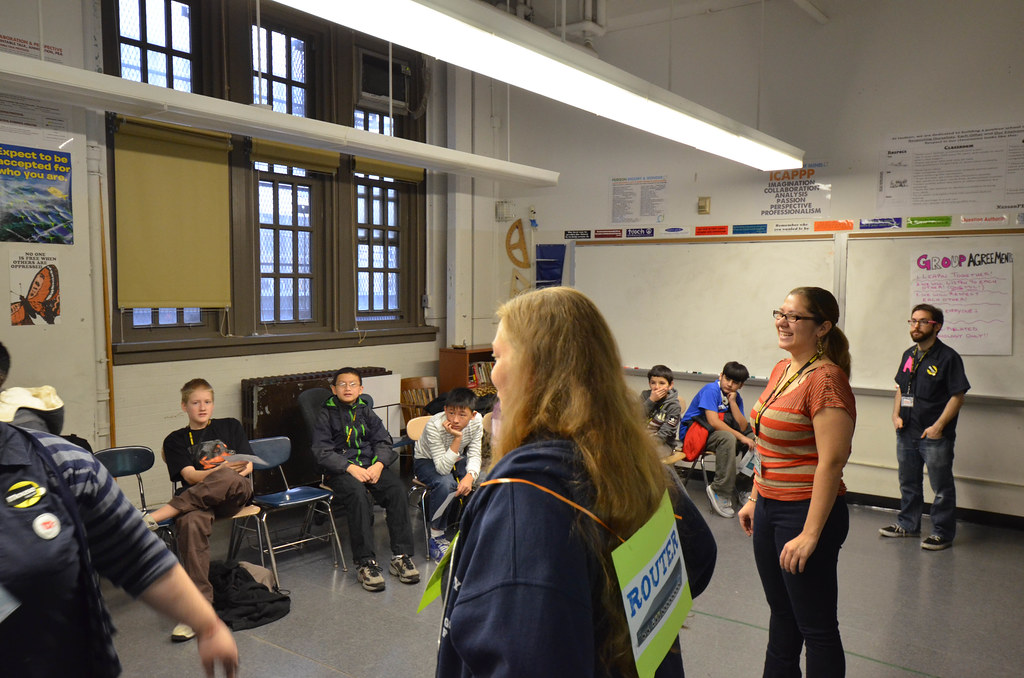
Hop 1: Local Router
Ask the example student to walk to the “Hop 1: Local Router” and explain:
First the packet will hop through local network devices like routers, switches or modems in your building. The local network devices then send the packet to the Internet.Hop 2: Internet Service Provider
Have the student walk to and explain the next hop:
After a packet gets here, to the Internet service provider, it is sent all the way to one of YouTube’s routers.Hop 3: Company Router
Once the packet gets through YouTube's router, it is sent to a computer in the company's headquarters that will stream my video.Website
In order to get the video to stream on my computer, YouTube’s computer converts my video into packets too, which travel all the way back to my computer on the same path of network devices it took to get to YouTube.Ask the example student to walk back to you, making sure to pause at each hop on the way back.
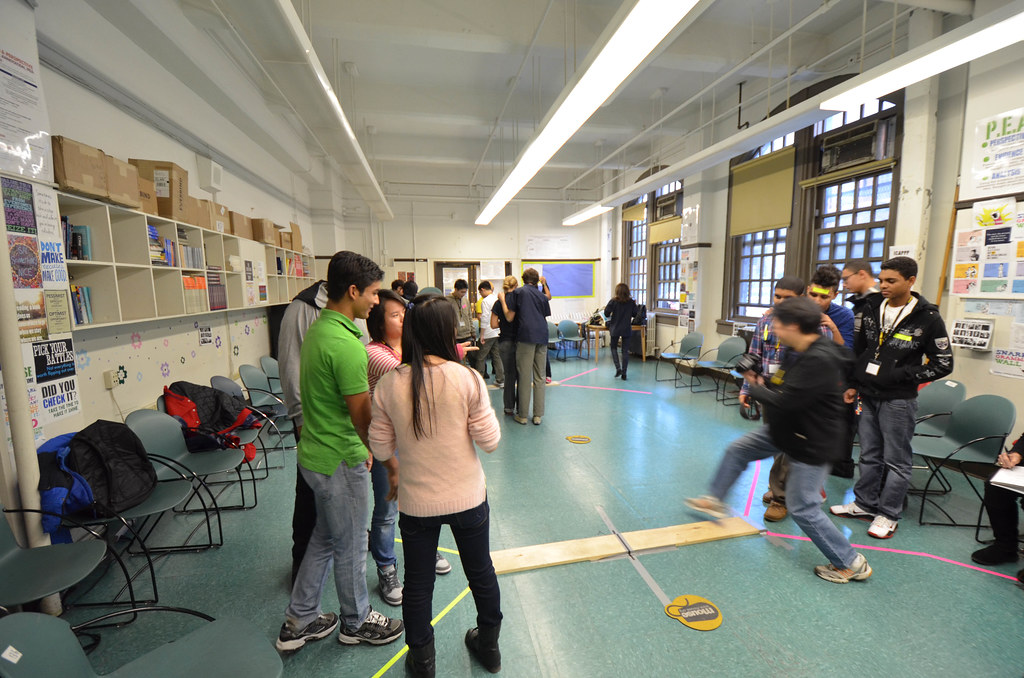
IP Addresses
When the student returns, ask if anyone knows how the devices at each hop know exactly where to send a packet. If no one knows, explain:
They use IP addresses! Every device or computer in a network or online has an IP (or “Internet Protocol”) address. It’s like a home address - and it helps devices find each other and communicate. IP addresses have 4 sets of numbers in a string like this: 172.168.3.12In Between Hops
To make the obstacle course more interesting, you might place "government spies" between hops. This resource from the EFF explains how third parties might intercept data between hops. Talk with your learners about what data is protected, what's vulnerable, and to whom.
-
15
minOff to the races!
Now it's time for everyone to try the obstacle course!
Explain to the students that they are all “packets” trying to make their way to Google.com (or the website you chose) to complete someone’s Internet request. They must stop at each “hop” before moving on to the next one.
But wait, there's a twist! Before the packets can get from one hop to the next, they must complete a quick challenge posed by the student acting as the Hop. Examples: Do 5 jumping jacks! Sing “Happy Birthday” etc.
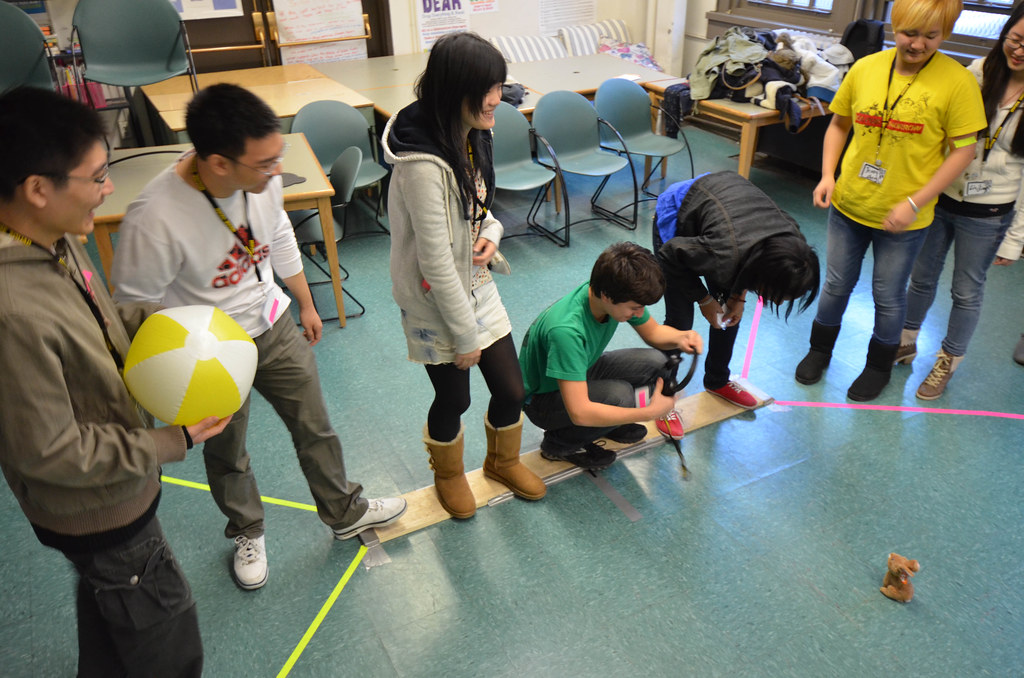
When the packet completes the Hop's challenge, the Hop will allow the packet to move the next location until the packets reach "The Website".
Ask the packets to form a single-file line and move through the obstacle course as quick as they can! You can have someone time how long it takes everyone to get through the course to see who makes it the fastest.
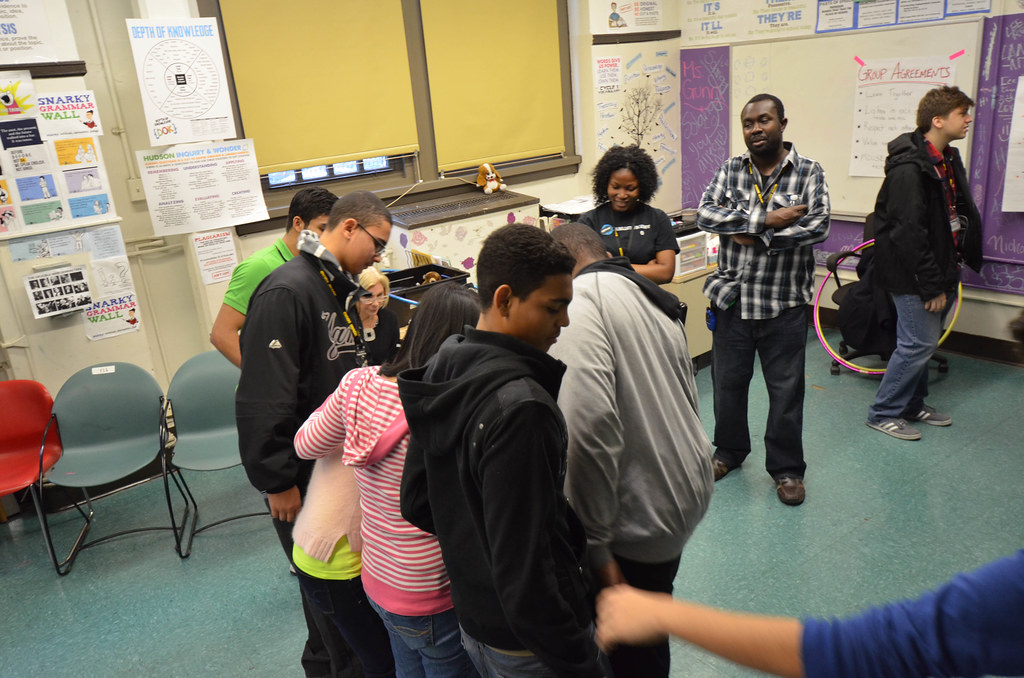
-
10
minReflection
After all learners have completed the obstacle course, show them just how quickly packets are able to move through the the Internet in real life.
If you don't have internet connectivity or are short on time, skip the Ping Utility exercise.
Ask the group some reflective questions like:
- How long did it take you to get all the way from the computer through the Internet to the website?
- Do you think a computer moves faster through the Internet than you did?
- What happens on the Internet when you type a Web address and hit enter?
- What are the 'parts' of the Internet?
- How do large amounts of information ever make it through low-bandwidth parts of the Net?
- What's the difference between the Internet and the World Wide Web?
Take a few guesses and then explain that we can actually tell exactly how long a real request takes by using the Ping utility in the Command Prompt (PC) or Terminal (Mac). Or if you are offline, just explain what would happen.
Ping is a function on computers that lets you check to see if your computer can connect to another computer over the network or online by sending a ‘packet’ of data to it and seeing how long it takes for the packet to come back.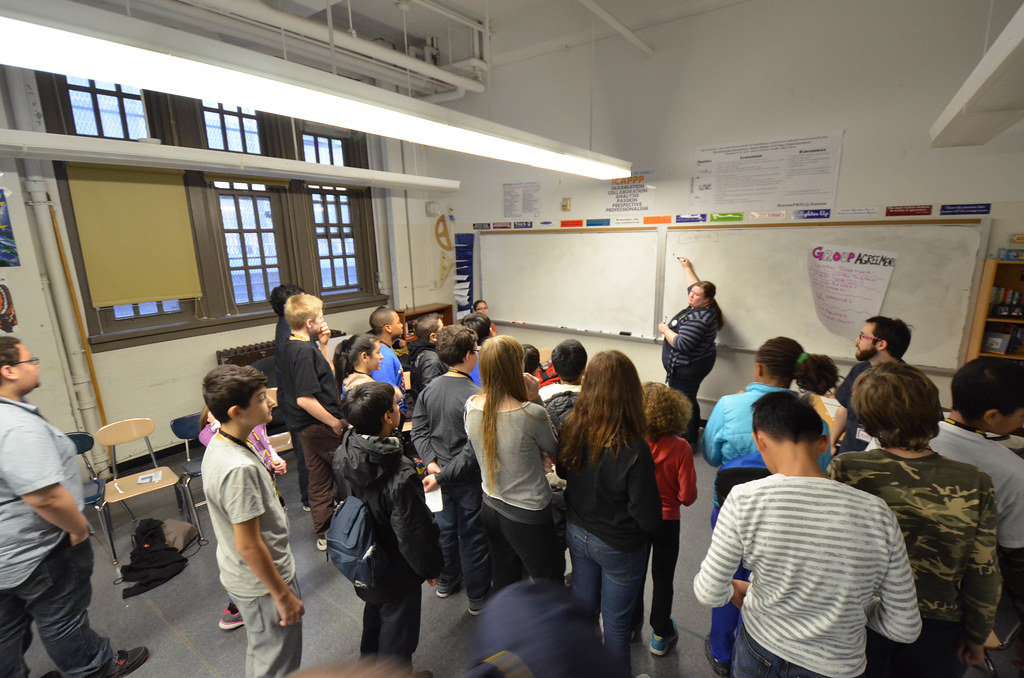
Ask students to make specific guesses/bets for how long it will take for 5 packets to ping Google and come back. Write down their guesses on the wall.
Either in groups (if equipment is available) or as one group looking at the projector, run the ping utility on google.com (use the tip sheet for instructions!)
Discuss the results
Complete the post-activity questionnaire.